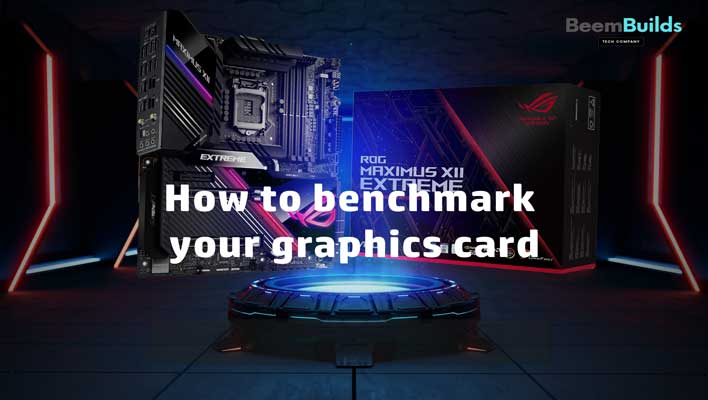In order to determine how well your graphics card will perform in all the latest PC games, benchmarking is a great way to find out how much power it has.
Benchmarks like these will put your graphics card to the test, so you can see at what resolution it can handle different tasks.
Using something like 3DMark and comparing the results with online ones is a good idea, for instance, if you are considering Control.
Benchmark results will not only allow you to see how your computer performs when playing the latest games, but will give you bragging rights, too. I noticed that you just spent a lot of money on Nvidia’s GeForce RTX 2080 Ti. Let your friends be jealous of your benchmark results.
Table of Contents
1. Why benchmark
The GPU benchmarks give your GPU a number of intensive graphical tests, so you can see how it performs while under load.
Even when you’ve built your own rig or overclocked your graphics card for enhanced performance, you can rely on the stability of your GPU by running a benchmark for a few hours.
The last thing you want is a problematic graphics card when playing a game, so benchmarks are helpful in spotting any issues early on. They should run smoothly for a few hours. In the event there is a crash artifact or some other graphical glitch, you can begin troubleshooting.
If your graphics card fails to run a benchmark, you should make sure it has plenty of airflow to prevent it from getting too hot.
2. How to benchmark
If you’re looking for graphics card benchmarking software, you have plenty to choose from. Several benchmarking applications are available for testing your graphics card.
The popular 3DMark benchmark, for example, is not free. Steam regularly discounts 3DMark, which is available on the platform. There is a free version (with limitations.)
Our recommendation would be to use Heaven Benchmark, as it is free and comes with plenty of settings to see how your graphics card performs.
Once it has been installed, run the program. The benchmark will run with various options, such as the quality of the texture and the resolution. The benchmark should be run at the resolution at which you typically play games.
These resolutions can also be viewed in Windows (for example, 1920 x 1080), then select ‘System’.
If you are interested in seeing how well your gaming system performs stereo 3D, such as Nvidia 3D vision, you can also enable 3D.
You are ready to pick up a pair of 3D glasses and start gaming if the benchmark runs without any crashes or major framerate drops.
When you don’t know what settings to use, you can use the pre-made benchmarking settings.
Choose “Basic” or “Extreme” from the drop-down list next to “Presets”.
There are some high-profile PC games that include built-in benchmarks if you want to know how your graphics card performs against a particular game. The benchmarks are usually located within the graphics settings window. In games that do not include built-in benchmarks, you can use programs such as FRAPS or MSI Afterburner to monitor your performance.
3. Benchmark results
A camera pans over a variety of attractive 3D environments during the Heaven benchmark.
The GPU’s ability to handle this level of graphics is revealed in this test.
Using your eyes, you should be able to detect dropped frames, graphical glitches, or tearing.
If your benchmarks don’t run smoothly, then your graphics card has problems handling certain graphics. A frame rate counter (frames per second) is located on top right of the screen, which gives you additional information.
This counter should be at least 30 for a smooth gameplay experience.
Your games will feel slow and choppy if your frame rate drops below these levels. You should aim for 60FPS, and the better the score, the better.
Your graphics card may have difficulty here if you change the settings on Heaven Benchmark.
The GPU model and memory will also be listed in this section. It’s also possible to view your GPU’s temperature via this menu – be on the lookout for high temperatures as they could indicate a struggling GPU. Furthermore, an overheating GPU can wreak havoc on the system.
The benchmark results can be recorded by clicking ‘Benchmark‘ on the top-left of the screen or pressing F9.
As soon as Heaven has run a number of tests, the results will appear in a new window.
The results will display your average frames per second, minimum frames per second, as well as your score. A higher score indicates a better performance. Heaven benchmark results can’t be compared easily, but many websites, including TechPowerUp and Overclock.net, have message boards designed especially for this purpose.
How could it be improved?
You can improve your graphics card’s score even if it does not get the score you desire before you upgrade your GPU.
The first thing you want to do is make sure your graphics card is running the latest stable drivers.
In the case of Nvidia graphics cards, you can check the driver version on the manufacturer’s website or use a program such as GeForce Experience for Nvidia graphics cards to ensure the latest version is installed.
Using experimental or beta drivers might be a good idea if you are using the last stable release. Afterward, you can restart your computer and wait for two minutes for all the services and programs to start.
Run the benchmarks again after Windows has restarted.
There may be another reason for your unhappiness if you’re still dissatisfied.
If your PC is underperforming and your benchmark scores are low, check to see if it’s dust free and well ventilated. Overheating graphics cards can also contribute to poor performance.
The insides can be cleaned using compressed air and a soft brush.
It might be worth buying a new graphics card if that doesn’t work. Don’t let this sweet RTX 2080 pass you by.
